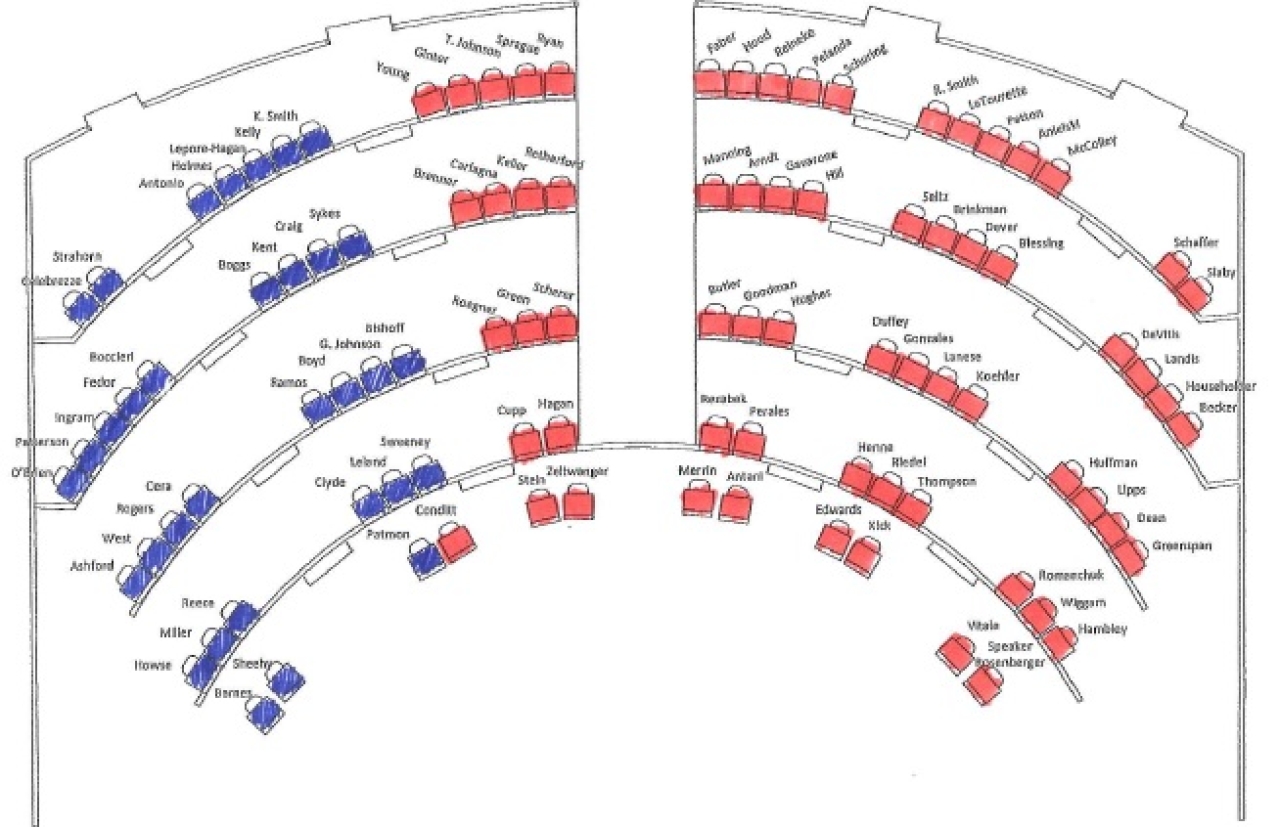Bipartisan redistricting reform clears last legislative hurdle before voters have final say in May

Following months of negotiation, the Ohio House today passed Senate Joint Resolution 5, bipartisan legislation that puts a constitutional amendment before voters in May to restrict congressional gerrymandering in the state.
“After months of negotiation, thousands of Ohioans speaking out, and several false starts, we’re closer to stopping congressional gerrymandering today than we have ever been before. Though imperfect, this latest plan represents one of the most fundamental tenets of our American democracy – compromise,” said House Democratic Leader Fred Strahorn (D-Dayton). “We support this plan today, with the hope and expectation that it will help impart that same spirit and guiding principle of cooperation on Washington in the near future.”
Democratic House expressed concerns over several parts of the proposed plan that they see as loopholes that, in extreme cases, could still allow partisan congressional district rigging. Ultimately, most Democrats still supported the final language in the resolution.
“By working together and making compromises, we are at a point today where Ohioans will have better representation, fairer districts and a stronger Democracy than before,” said state Rep. Jack Cera (D-Bellaire), a member of the legislature’s four-person congressional redistricting working group. “Voters deserve to feel like they’re being heard and that their vote counts. This bipartisan compromise will begin to bridge that divide that has put Washington’s political interests above the public’s for too long.”
If approved by voters in May, the reform plan will be the first time fairness criteria for congressional districts will be included in the state’s constitution. Included among the plan’s changes are the right for a citizen-led referendum on any map, the governor’s authority to veto a map, requirements to limit community and county splits, and bipartisanship requirements for a 10-year map.
Here is what other House Democratic lawmakers are saying about today’s vote on SJR 5:
“While SJR 5 is not a perfect piece of legislation, it is better than what we have now. I appreciate all the work that has been done by the committee legislators, the coalition advocates and I especially appreciate the work by those who have been out collecting signatures to ensure fairer districts,” said state Rep. Nickie J. Antonio (D-Lakewood). “Ultimately, redistricting reform is about taking back our democracy and ensuring that the people have the opportunity to elect representatives who reflect their constituency rather than politicians selecting their constituents.”
“The passage of SJR 5 is a compromise that will give voters the opportunity to vote on how Ohio draws our congressional districts,” said OLBC President and state Rep. Stephanie Howse (D-Cleveland). “The process outlined in the resolution is not perfect, but it is a step forward to strengthening our democracy and drawing congressional districts that equitably represent Ohio.
“When we work together to achieve compromise, sometimes we end up with a solution that has flaws. Ohioans can trust that this solution was hard fought,” said state Rep. Tavia Galonski (D-Akron).
"This is the start of a conversation regarding redistricting and developing a bi-partisan plan that involves fair representation of Ohio’s voters,” said state Rep. Michael Ashford (D-Toledo). “One serious issue is addressing the split of congressional districts and keeping districts fair and whole"
“In 2015, over 71% of Ohioans voted to change the redistricting process. While I am still concerned about the splitting of Ohio’s largest population counties and the lack of provision to guarantee voting rights, SJR 5 is a marked improvement over Ohio’s current method of drawing our congressional districts,” said state Rep. Kent Smith (D-Euclid). “I voted for SJR 5 because it’s an improvement, but I did not cosponsor this legislation because it could be better.”
“This resolution speaks to the legislature’s ability to come together and do what’s right, even in this highly stratified political environment,” said state Rep. Glenn Holmes (D-Girard). “I am confident that the deliberative process that gave us this compromise will result in better representation for all of Ohio’s citizens.”
“Today’s actions are the result of an effort in compromise. Although nothing is perfect, I applaud the bipartisan effort the authors of this legislation intended to create a fair and solid framework to improve the structuring of congressional districts and form a better representation of Ohio’s voting citizens,” said state Rep. John Rogers (D-Mentor-on-the-Lake). “It is my hope Senate Joint Resolution 5 will allow our congressional districts to be more representative, more responsive and certainly less dysfunctional. There is always room for improvement at the federal level, and is my hope that this legislation will enable Ohio’s congressional delegation to improve their representation of our citizens and their interests.”
“The redistricting plan put forward in Senate Joint Resolution 5, while not perfect, is an important step towards districts that better reflect Ohio. Citizens of Ohio deserve fair districts,” said Rep. Teresa Fedor. “Voters should choose their representatives. When we have fair districts, the people of Ohio will likely have more problems solved and less partisanship. SJR 5 is a start for the voters to have a stronger voice in our republic.”




